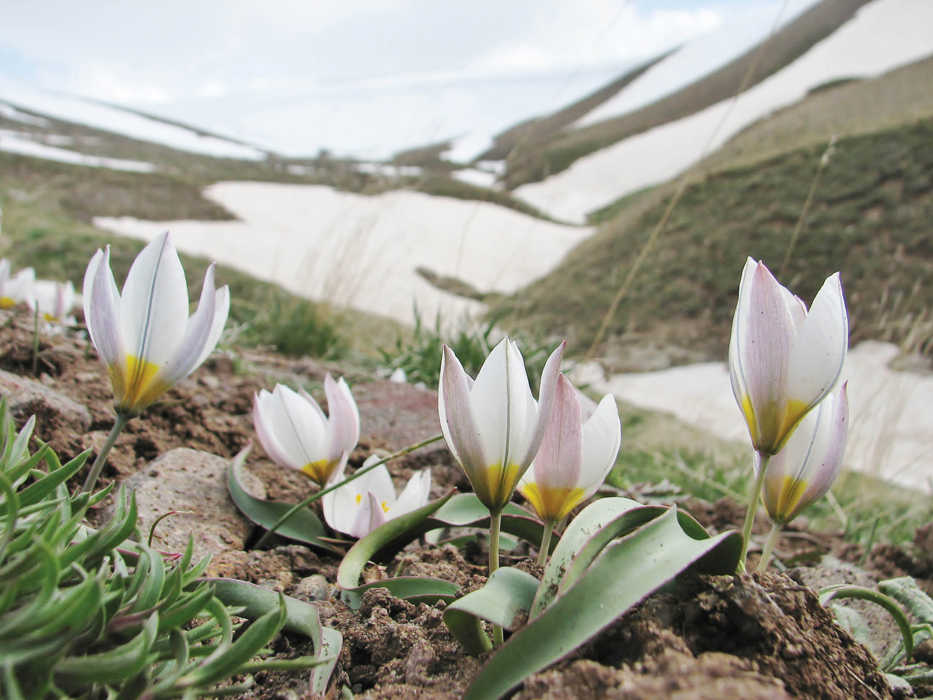Maybe it’s time to rethink the way we landscape using tulips.
True, the familiar, large, goblet-shaped blooms make a colorful springtime splash grouped in beds and pots. But those hybrids are softies compared to their wild ancestors — species tulips growing in unforgiving sites from Algeria to China. They thrive in problem areas.
Tulips are not native to Holland, but growers there over the past 400 years have built an industry around developing hybrids for the commercial trade. Their classic tulips perform best with fertile soil and an ample moisture supply.
That’s not the story, however, with clones of the botanical or species tulips. Those you can plant and forget. Neglect them. Sear them under the sun. Simply scratch the small bulbs into some gravel or tuck them into rocky crevices and they’ll survive that austerity just as they have the harsh, hardscrabble mountain conditions of Afghanistan, Switzerland, Kazakhstan, Turkey or Mongolia.
“Wild tulips are better adapted to difficult conditions,” said Christian Curless, a horticulturist for the flower bulb company Colorblends.com.
“They’re happiest with parched conditions in summer — places where the grass dries up,” he said. “These are the kinds of flowers you can plant in a rock garden or elevated a little bit for good drainage.”
Botanical tulips differ visibly from their hybrid progeny.
“They tend, in general, to be smaller — finer in flower and in foliage,” Curless said. “They have more of a starry-eyed look to them.”
Wild tulips have been trendy in Europe since they were introduced by botanical expeditions in the early 20th century, said Eric Breed, a Dutch bulb expert and tulip hunter. “Also, in the U.S.A., they have been popular since the 1960s and ‘70s when large numbers became available from nurseries in Holland,” he said.
Like most spring-blooming bulbs, species tulips should be planted in the fall. Get them in the ground early enough so their roots can develop before the soil freezes.
Skip the fertilizers and go easy on the watering. “Moisture can be a problem,” Curless said. “Too much love.”
Species tulips aren’t perennials but they do live longer than the familiar standard varieties, with bulbs producing blooms through at least several seasons. Their bloom period ranges from early spring well into June. They perform best in USDA Zones 3 to 7.
Shop for labels specifying the genus Tulipa, about 100 species of which have been cloned for domestic use.
Look to the low-growing Tulipa tarda for white flowers with a yellow eye. It naturalizes somewhat and tolerates black walnut trees. The Tulipa bakeri has lilac-colored petals with yellow centers, and partners well with dwarf daffodils. Tulipa kaufmanniana is said to resemble a water lily when fully open and is among the first to flower in spring. The Tulipa turkestanica delivers fragrant white petals having orange centers, and is a repeat bloomer.
One caution: Although species tulips are better at handling harsh growing conditions than are most modern-day tulip hybrids, they’re just as vulnerable to predation.
“In my (Connecticut) garden, chipmunks devastate them,” Curless said. “So will deer, voles and squirrels if they know where they are.”
You can contact Dean Fosdick at deanfosdick@netscape.net

